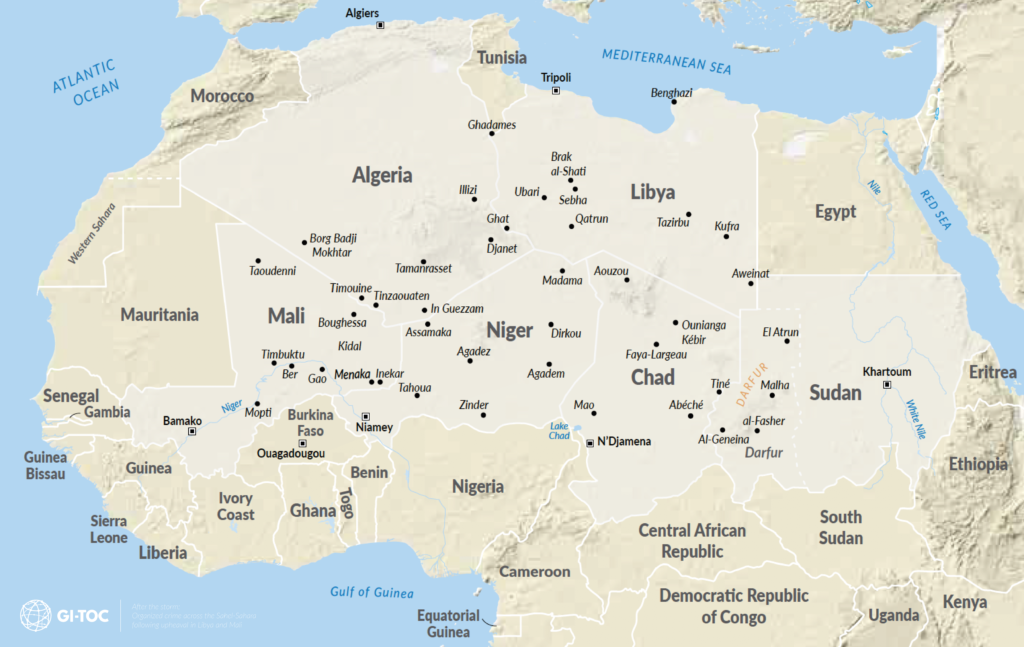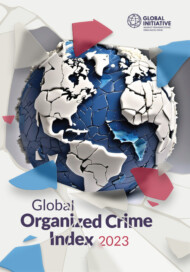Posted on 21 Nov 2019
Organized crime in the Sahel has entered a new phase of consolidation and diversification. During the past decade, criminal activity expanded exponentially, particularly in the wake of the conflicts in Libya (2011) and Mali (2012). Arms stockpiles from the Libyan regime spilled into neighbouring countries at an alarming rate following the revolution, fuelling conflict across the region and bolstering the operational capacity of criminals all the way from Mali to southern Sudan – and beyond.

Defining the geography:
In The Sahel (meaning, literally, the desert ‘coast’) is a transitional eco-climatic belt of semi-arid territory south of the Sahara desert (often also referred to as the sea of sand). It runs across the breadth of the African continent connecting 15 countries. This report focuses on a region that is more accurately described as the Sahel-Sahara (Mali, Niger, Chad, southern Algeria, southern Libya and Darfur).
For the purposes of a regional analysis of organized crime, a strict focus on the Sahel is less than ideal, as some of the most salient territories (including most of northern Mali, northern Niger, northern Chad, large parts of southern Algeria and southern Libya) are not technically part of the Sahel region despite being interconnected from a socio-economic perspective, as well as a criminal one.
In fact, there is a common pattern of criminality spanning this region that is facilitated by shared drivers: poor or weak governance, underdevelopment, insecurity and porous borders. For this reason, the term ‘Sahel-Sahara’ is used throughout this document to denote the research approach adopted, which was very much focused on regional flows and interconnectivity.




